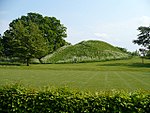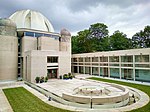Lucy Cavendish College, Cambridge
1965 establishments in EnglandColleges of the University of CambridgeEducational institutions established in 1965EngvarB from April 2018Lucy Cavendish College, Cambridge ... and 1 more
Women's universities and colleges in the United Kingdom

Lucy Cavendish College is a constituent college of the University of Cambridge. The college is named in honour of Lucy Cavendish (1841–1925), who campaigned for the reform of women's education.
Excerpt from the Wikipedia article Lucy Cavendish College, Cambridge (License: CC BY-SA 3.0, Authors, Images).Lucy Cavendish College, Cambridge
Mount Pleasant, Cambridge
Geographical coordinates (GPS) Address Website External links Nearby Places Show on map
Geographical coordinates (GPS)
| Latitude | Longitude |
|---|---|
| N 52.2112 ° | E 0.1101 ° |
Address
Lucy Cavendish College (University of Cambridge)
Mount Pleasant
CB3 0BU Cambridge
England, United Kingdom
Open on Google Maps











